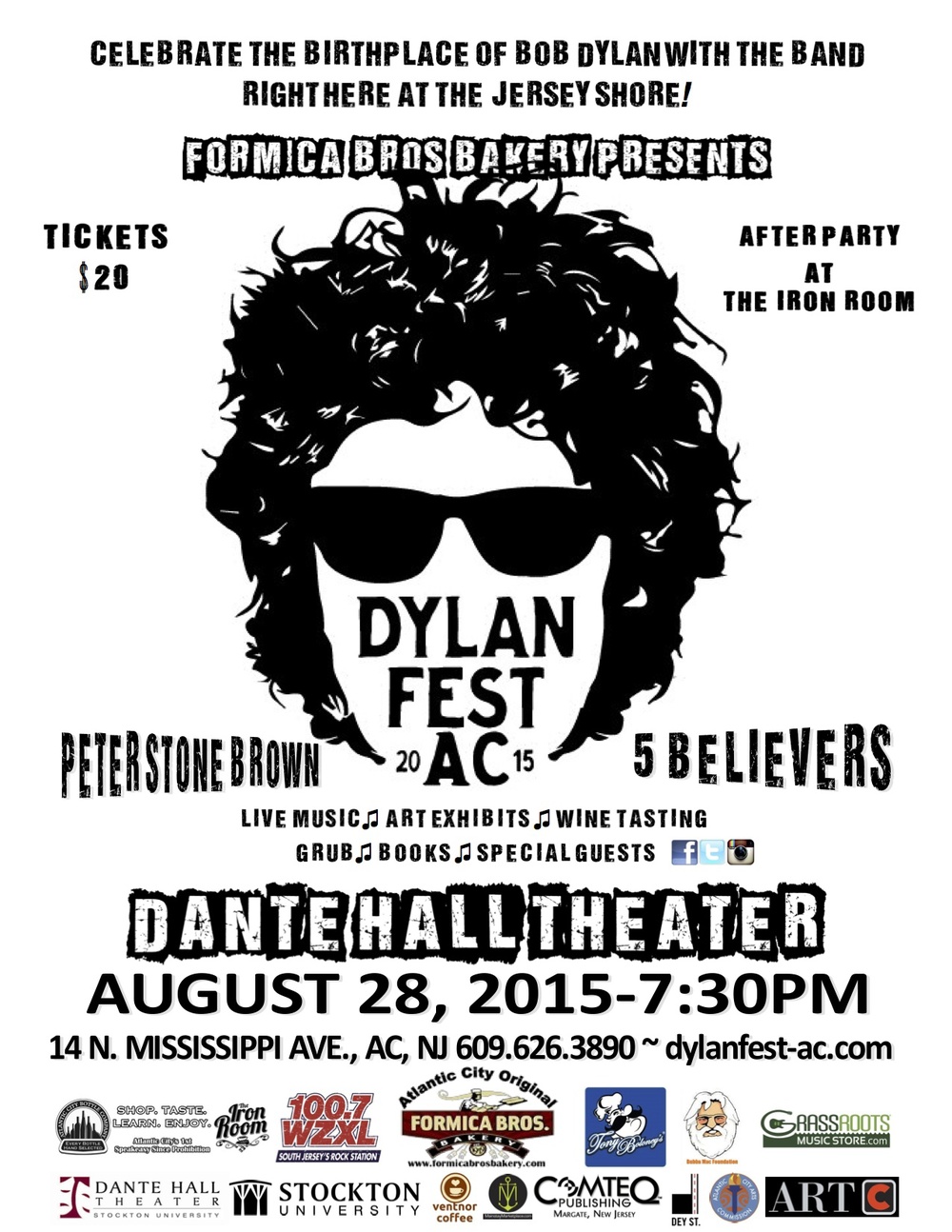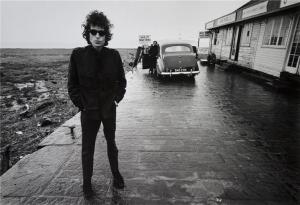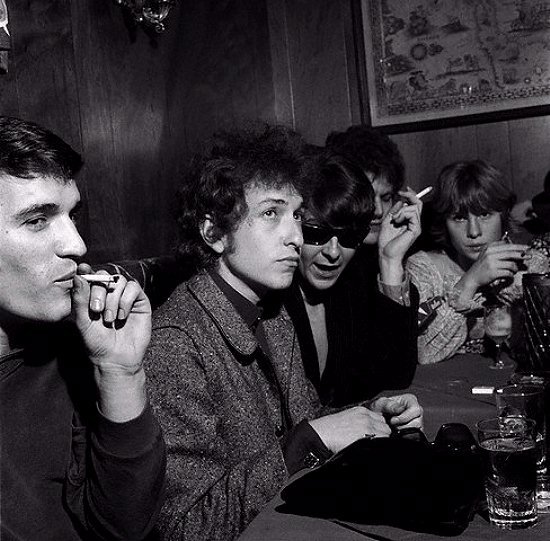Down @ the
Crossroads w/ Dylan, Robert Johnson and the Devil
The day Bob Dylan signed his first Columbia
recording contract in John Hammond, Sr.’s office Hammond gave Dylan a couple of
albums of other Columbia artists including Robert Johnson’s “The King of the
Delta Blues,” who Dylan never heard of
but blew him away.
The Mississippi Delta is the home and cradle of the
blues as much as New Orleans is the birthplace of jazz, and in academic circles
blues is considered a branch of jazz, and in fact followed the jazz trail when
the musicians and prostitutes were kicked out of New Orleans in the closure of
Storyville, the once-legal red light neighborhood where they lived, by the U.S.
Army and Navy, though the righteous citizens of the city protested. “You can
make it illegal but you can’t make it unpopular,” the New Orleans mayor said.
But just as Katrina did a century later, the civic crackdown on Storyville – in
November 1917, spread the musicians and the music beyond the city limits, and
most of the suddenly out-of-work musicians followed the riverboats upriver to
St. Louis, Memphis and Chicago, and letting off the bluesmen in the delta where
they took root.
Their contemporary offshoots include the likes of
Sonny Boy Williamson, James Cotton, B.B. King, Levon Helm and Robert Johnson –
the “King of the Delta Blues,” who died broke and friendless at 27 years, said
to be poisoned by a jealous husband or lover, leaving behind only 20 some
recorded songs and two photographs.
When John Hammond, Sr. and Allan Lomax tried to find
him to record him he was already dead, but not forgotten.
Legend has it that Robert Johnson couldn’t play a
lick when he first picked up a guitar as a young boy, and was the subject of
jokes among the real musicians, until he left town for awhile and came back
with a style that shocked and amazed everyone, sparking a the myth that he made
a deal with the devil, selling his soul in exchange for the musical talent.
“Sweet Home Chicago” was one of the songs Johnson
recorded in two sessions at Texas hotels, and his other songs were covered by
many artists over the years, but his most famous song is “Crossroads Blues”
that Eric Clapton, Stevie Ray Vaughn, Jimi Hendrix and dozens of others have
covered and made famous.
According to Dylan, Robert Johnson hit him like a
“tranquilizer bullet.”
Dylan later wrote in his autobiographical
Chronicles, Volume 1: “I listened to it repeatedly, cut after cut, one song
after another, sitting staring at the record player. Whenever I did, it felt
like a ghost had come into the room; a fearsome apparition…masked the presence
of more than twenty men….Johnson’s words made my nerves quiver like piano
wires. They were so elemental in meaning and feeling and gave you so much of
the inside picture…..There’s no guarantee that any of his lines either
happened, were said, or even imagined…I copied Johnson’s words down on scraps
of paper so I could more closely examine the lyrics and patterns and free
associations that he used, the sparkling allegories, big-ass truths wrapped in
the hard shell of nonsensical abstraction – themes that flew through the air
with the greatest of ease. I didn’t have any of these dreams or thoughts but I
was going to acquire them. I thought about Robert Johnson a lot, wondered who
his audience could have been. It’s hard to imagine sharecroppers or plantation
field hands at hop joints, relating songs like these. You have to wonder if
Johnson was playing for an audience that only he could see, one off in the
future.”
Dylan discounts “the fast moving story going around
that he had sold his sold to the devil at a four way crossroads at midnight and
that’s how he got to be so good. Well, I don’t know about that. The ones
who knew him told a different tale and
that was that he had hung around some older blues players in rural parts of
Mississippi, played harmonica, was rejected as a bothersome kid, that he went
off and learned how to play guitar from a farmhand named Ike Zinnerman, a
mysterious character not in any of the history books.”
“This makes more sense,” says Dylan, as “John
Hammond had told me that he thought Johnson had read Walt Whitman. Maybe he
did, but it doesn’t clear up everything…..I would see Johnson for myself in
eight seconds worth of 8-millimeter film shot in Ruleville, Mississippi, on a
brightly lit afternoon street by some Germans in the late 1930s, but slowing
the eight seconds, you can see that it really is Robert Johnson, has to be –
couldn’t be anyone else.”
“I wasn’t the only one who learned a thing or two
from Robert Johnson’s compositions,” Dylan wrote, “Johnny Winter, the
flamboyant Texas guitar player born a couple of years after me, rewrote
Johnson’s song about the phonograph, turning it into a song about a television
set. Robert Johnson would have loved that. Johnny by the way recorded a song of
mine, ‘Highway 61 Revisited,’ which itself was influenced by Johnson’s writing.
It’s a strange the way circles hook up with themselves. Robert Johnson’s code
of language was nothing I’d heard before or since. To go with that, someplace
along the line Suzie (Rotolo) had also introduced me to the poetry of French
symbolist poet Arthur Rimbaud. That was a big deal too. I came across one of
his letters called ‘Je est un autre,’ which translates into ‘I is someone
else.’ When I read those words bells went off. It made perfect sense….I went
right along with Johnson’s dark night of the soul…Everything was in transition
and I was standing in the gateway. Soon I’d step in heavy loaded, fully alive
and revved up. Not quite yet though.”
And so it was when Hollywood came calling for the
movie rights to the P. F. Kluge novel “Eddie & the Cruisers,” and the producers
and script writers would eliminate a chapter, the one where the Cruisers drive
their ’57 Chevy to Camden to visit Walt Whitman’s house, and in its place
Whitman’s “Leaves of Grass” and “singing
the body electric” is replaced by Arthur Rimbaud, who reportedly faked his own
death in order to live out his life
anonymously, much like Eddie Wilson does in the follow up film.
Is Dylan pulling our leg with the Ike Zinnerman
story, a farmhand teaching Robert Johnson how to play guitar instead of making
a deal with the devil at the crossroads? After all, Dylan’s real name is Robert
Zimmerman.
Supporting Dylan’s version, over the popular myths
and legends, is the fact that the devil isn’t mentioned in the lyrics of Robert
Johnson’s song “Crossroads Blues,” that makes no reference to a deal with the
devil.
Cross
Road Blues
I
went to the crossroad
fell
down on my knees
I
went to the crossroad
fell
down on my knees
Asked
the Lord above "Have mercy, now
save
poor Bob, if you please
Mmmmm,
standing' at the crossroad
I
tried to flag a ride
Standin'
at the crossroad
I
tried to flag a ride
Didn't
nobody seem to know me
everybody
pass me by
Mmm,
the sun goin' down, boy
dark
gon' catch me here
oooo
ooee eeee
boy,
dark gon' catch me here
I
haven't got no lovin' sweet woman that
love
and feel my care
You
can run, you can run
tell
my friend-boy Willie Brown
You
can run, you can run
tell
my friend-boy Willie Brown
Lord,
that I'm standin' at the crossroad, babe
I
believe I'm sinkin' down
According to the popular legend: “A crossroads or
an intersection of rural roads is one of the few landmarks in
the Mississippi Delta, a flat featureless plain between the Mississippi
and Yazoo rivers. It is part of the local iconography. A crossroads is also
where cars are more likely to slow down or stop, thus presenting the best
opportunity for a hitchhiker. In the simplest reading, Johnson describes his
grief at being unable to catch a ride at an intersection before the sun sets. However,
many see different levels of meaning and some have attached a supernatural
significance to the song.”
Crossroads are also points where people, families,
towns, cities and sometimes whole societies reach a point in time where life
changing decisions must be made, directions are changed and new destinations
are set.
And so it came to pass in the summer of 1965 when America’s
national psych came to a crossroads that was a circle – the Somers Point, New
Jersey circle that led to many directions, five different roads, each with its
hazards and rewards.
Some people want to know why the summer of ’65 was the
best tourist season the Jersey Shore has ever seen before or since. Families
came, college kids made it cool, hippies thought it was hip, bikers put in an
appearance, but as everyone who was there remembers, it was The Place to be at
that time. Some say it was the weather, others say the economy was good while
still others say it was written in the stars, and it was just the right
alignment of people and planets to create the special things that occurred.
And so the summer of 1965 began down at the
crossroads, down the shore, the South Jersey Shore, where the crossroads was a
circle, the Somers Point Circle, and very close to where all the action would
take place and from where, as the sun set on Labor Day, everyone would leave to
go in their own new direction, for better or for worse, to reward or tragedy,
their destiny was determined - a fait accompli – but it still had to play out.







